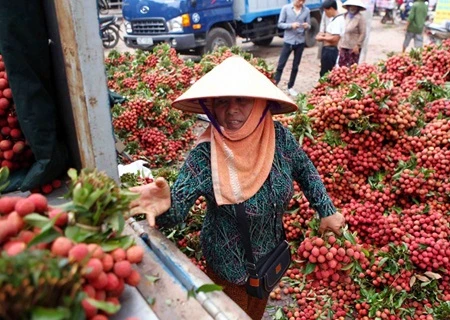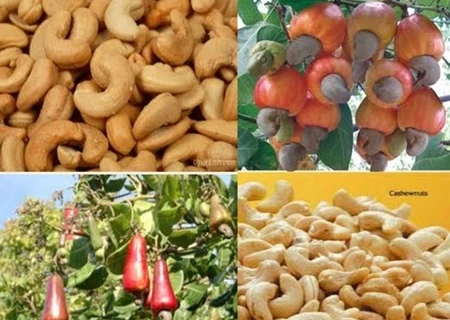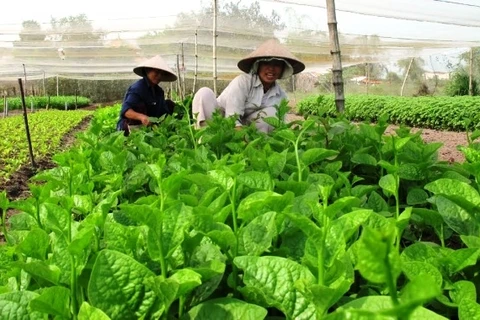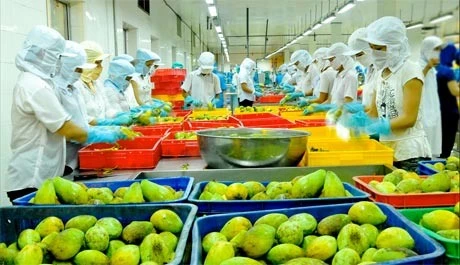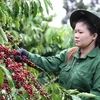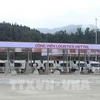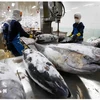Hanoi (VNA) – Vietnam saw significant rise in exports of fruit and vegetable products in the first half of 2017 but local exporters still cannot find themselves at ease over unstable supply and food safety issues.
According to statistics by the General Department of Vietnam Customs, exports of fruit and vegetable products hit over 1.68 billion USD in the first six months of 2017, a year-on-year increase of 41.4 percent.
The future of the fruit and vegetable industry looks every promising this year as the sector targets to ship abroad 3 billion USD worth of the products for the entire year.
The country has enjoyed impressive growths of fruit and vegetable exports in some foreign markets, including the UAE (93.6 percent), Hong Kong (China) (89 percent), and Laos (69 percent).
China remained Vietnam’s biggest buyer who imported 1.1 billion USD worth of fruit and vegetable products in the first five months of this year, up 50.5 percent year-on-year and making up 75.5 percent of the total exports.
The United States was far behind with 44.7 million USD, up 23.5 percent. It was closely followed by Japan with 43.3 million USD, up 56 percent.
Japan is emerging as a promising market though Vietnam’s fresh fruits and vegetables still struggled to satisfy its quarantine standards. Japan has allowed imports of some fruits with seed from Vietnam, such mango and dragon fruit.
Meanwhile, Vietnam plans to export 104 million USD worth of fruits and vegetables to the US in 2017, up 21 percent from 2016. However, the figure is believed to be below the real potential of Vietnam as well as demand of the US market.
Besides fresh products, Vietnam produces juices together with frozen, canned and dried fruits to suit needs of different markets. While the US market appears to like most of the products, the EU seems to prefer juices and frozen products.
In spite of the bright outlook, the fruit and vegetable producers face a bumpy ride due to unstable input supply and prices. In reality, when China purchases a large volume of a fruit, immediately making the price go up; then fruit processing factories cannot collect enough materials for production throughout the year.
On the other hand, unstable prices also make it tough for the local exporters to fill orders from foreign partners as the two sides will have to negotiate and sign contracts months before harvest season.
Lack of large-scale farms has led to unsteady source of supply and low food safety standards, especially in frozen products which are more likely to have bacterial problems, a business from Tien Giang said.-VNA
According to statistics by the General Department of Vietnam Customs, exports of fruit and vegetable products hit over 1.68 billion USD in the first six months of 2017, a year-on-year increase of 41.4 percent.
The future of the fruit and vegetable industry looks every promising this year as the sector targets to ship abroad 3 billion USD worth of the products for the entire year.
The country has enjoyed impressive growths of fruit and vegetable exports in some foreign markets, including the UAE (93.6 percent), Hong Kong (China) (89 percent), and Laos (69 percent).
China remained Vietnam’s biggest buyer who imported 1.1 billion USD worth of fruit and vegetable products in the first five months of this year, up 50.5 percent year-on-year and making up 75.5 percent of the total exports.
The United States was far behind with 44.7 million USD, up 23.5 percent. It was closely followed by Japan with 43.3 million USD, up 56 percent.
Japan is emerging as a promising market though Vietnam’s fresh fruits and vegetables still struggled to satisfy its quarantine standards. Japan has allowed imports of some fruits with seed from Vietnam, such mango and dragon fruit.
Meanwhile, Vietnam plans to export 104 million USD worth of fruits and vegetables to the US in 2017, up 21 percent from 2016. However, the figure is believed to be below the real potential of Vietnam as well as demand of the US market.
Besides fresh products, Vietnam produces juices together with frozen, canned and dried fruits to suit needs of different markets. While the US market appears to like most of the products, the EU seems to prefer juices and frozen products.
In spite of the bright outlook, the fruit and vegetable producers face a bumpy ride due to unstable input supply and prices. In reality, when China purchases a large volume of a fruit, immediately making the price go up; then fruit processing factories cannot collect enough materials for production throughout the year.
On the other hand, unstable prices also make it tough for the local exporters to fill orders from foreign partners as the two sides will have to negotiate and sign contracts months before harvest season.
Lack of large-scale farms has led to unsteady source of supply and low food safety standards, especially in frozen products which are more likely to have bacterial problems, a business from Tien Giang said.-VNA
VNA

